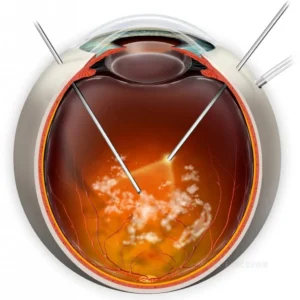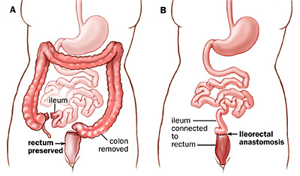Description
Familiarity with treatment
McIndoe vaginoplasty, also known as the McIndoe technique or procedure, is a surgical technique used for vaginal reconstruction. It is primarily performed in cases of vaginal agenesis, where the vagina is absent or underdeveloped.
Here is a general explanation of the McIndoe vaginoplasty procedure based on the information from the search results:
Technique: The McIndoe technique differs from other types of vaginoplasty, such as peritoneal and intestinal vaginoplasties. Unlike those procedures, the McIndoe technique does not require abdominal surgery. Instead, it involves lining the vagina with a skin graft.
Skin graft: In the McIndoe vaginoplasty, a skin graft is used to create the lining of the neovagina. The skin graft is typically taken from another area of the body, such as the vulva or buccal cavity (inside of the cheek).
Vaginal mold: A vaginal mold is used in the initial stages of healing. The skin graft is placed on the mold and then inserted into the space that has been opened to create the vagina. The mold is used consistently for the first few months after surgery to promote proper healing and the formation of an open cavity suitable for sexual intercourse.
Postoperative care: Following the McIndoe vaginoplasty, postoperative care is crucial. This may include wound care, pain management, dilation exercises, and regular follow-up appointments with the surgeon to monitor healing and address any concerns or complications.
Who is it suitable for?
McIndoe vaginoplasty is primarily suitable for individuals with vaginal agenesis, a condition where the vagina is absent or underdeveloped. It is a surgical procedure commonly used to create a neovagina in these cases. The procedure is often considered the surgical treatment of choice for vaginal agenesis.
Who is it not suitable for?
Based on the search results, it is not explicitly mentioned who McIndoe vaginoplasty is not suitable for. However, it is important to note that McIndoe vaginoplasty is primarily performed in cases of vaginal agenesis, where the vagina is absent or underdeveloped. It is considered the procedure of choice for most patients with vaginal agenesis.
Advantages
Based on the information from the search results, the advantages of McIndoe vaginoplasty include:
Suitable for vaginal agenesis: McIndoe vaginoplasty is considered the procedure of choice for most patients with vaginal agenesis, where the vagina is absent or underdeveloped 1.
Functional neovagina: McIndoe vaginoplasty aims to create a functional neovagina, allowing individuals to engage in sexual intercourse.
No abdominal surgery required: Unlike other types of vaginoplasty, such as peritoneal and intestinal vaginoplasties, the McIndoe technique does not require abdominal surgery to create the lining of the vagina. Instead, it uses a skin graft to line the neovagina 2.
Skin graft technique: The McIndoe technique involves using a skin graft, typically taken from another area of the body, to create the lining of the neovagina. This technique has been used successfully for many years 3.
Promotes healing: The use of a vaginal mold in the initial stages of healing helps promote proper healing and the formation of an open cavity suitable for sexual intercourse 2.
Safe and effective: McIndoe vaginoplasty is considered safe and effective for vaginal reconstruction.
Complications
Based on the information from the search results, the complications associated with McIndoe vaginoplasty may include:
Rectovaginal fistula: A rectovaginal fistula is a complication where a hole forms between the rectum and the neovagina. This can lead to the passage of stool or gas through the vagina.
Graft failure: In some cases, the skin graft used to line the neovagina may not take or heal properly, resulting in graft failure.
Less-than-perfect results: While McIndoe vaginoplasty is considered the procedure of choice for most patients with vaginal agenesis, the search results mention that the results achieved may be less than perfect.
Long-term follow-up and care: The neovagina created through McIndoe vaginoplasty requires long-term follow-up and care to ensure its proper function and address any potential complications.
preoperative care
Based on the available information, the preoperative care for McIndoe vaginoplasty may involve the following:
Patient evaluation: A thorough evaluation of the patient’s medical history, physical examination, and assessment of their specific condition, such as vaginal agenesis, is typically conducted.
Discussion and counseling: The healthcare professional or surgeon will have a detailed discussion with the patient about the procedure, its goals, potential risks and complications, expected outcomes, and postoperative care. This is an opportunity for the patient to ask questions and address any concerns they may have.
Preoperative testing: Depending on the patient’s overall health and specific circumstances, preoperative tests such as blood tests, imaging studies, and other diagnostic procedures may be performed to ensure the patient is in optimal condition for surgery.
Preparation for surgery: The patient may be instructed to follow specific preoperative instructions, which may include fasting for a certain period of time before surgery, discontinuing certain medications or supplements, and avoiding smoking or alcohol consumption.
Consent and paperwork: The patient will be required to provide informed consent for the surgery, acknowledging their understanding of the procedure, its risks, and potential outcomes. Necessary paperwork and documentation will be completed.
Postoperative care
The postoperative care for McIndoe vaginoplasty may involve the following considerations:
Hospital stay and monitoring: After the surgery, the patient will typically stay in the hospital for a few days for monitoring and initial recovery. The healthcare team will closely monitor the patient’s vital signs, pain management, and wound healing.
Pain management: Adequate pain management will be provided to ensure the patient’s comfort during the recovery period. This may include the use of pain medications as prescribed by the healthcare professional.
Wound care: Proper wound care is essential for the healing of the surgical site. The healthcare team will provide instructions on how to care for the incision site, which may include keeping the area clean, applying dressings or ointments as instructed, and avoiding activities that may disrupt the healing process.
Vaginal mold or stent: In some cases, a vaginal mold or stent may be used to maintain the shape and patency of the neovagina during the initial healing phase. The mold or stent is typically used for a specific period of time and may require regular cleaning and maintenance as instructed by the healthcare professional 1.
Follow-up appointments: Regular follow-up appointments will be scheduled to monitor the healing progress, assess any potential complications, and provide further guidance on postoperative care. These appointments are crucial for the long-term success and well-being of the patient.
Activity restrictions: The patient may be advised to avoid strenuous activities, heavy lifting, or sexual intercourse during the initial recovery period to allow for proper healing.





Reviews
There are no reviews yet.